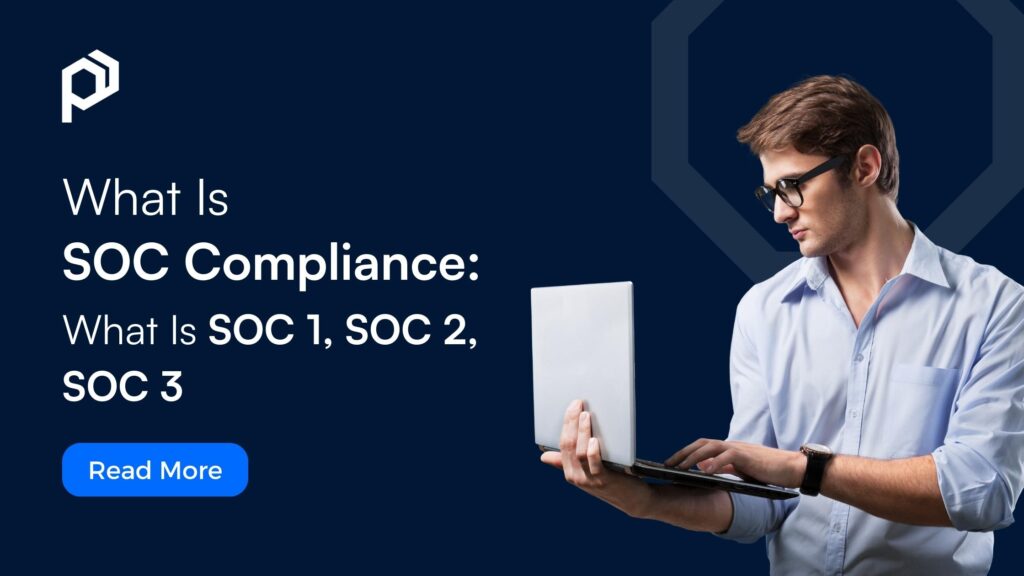What Is SOC Compliance: What Is SOC 1, SOC 2, SOC 3
In today’s fast-evolving digital ecosystem, ensuring the security, privacy, and reliability of data has become paramount. Companies that interact with or process sensitive information often need to show that they have robust controls in place. This is where the concept of SOC compliance comes into play, offering a seal of trust and confidence to partners and customers.
Understanding SOC Compliance
Definition and Brief History of SOC
SOC, which stands for System and Organization Controls, is a suite of audit reports from the American Institute of CPAs (AICPA). Originally introduced to replace the SAS 70 standard, SOC provides a benchmark for organizations to showcase their commitment to managing and securing client data.
Its Importance in Today’s Digital Landscape
In the age of business automation and holistic automation systems, the importance of SOC cannot be overstated. It ensures that service organizations have the right controls to protect client data, making it a critical component in business process management.
SOC 1 Compliance
SOC 1, which was formerly recognized as the Statement on Standards for Attestation Engagements No. 18 (SSAE 18), is an essential framework that zeroes in on the controls directly related to a user entity’s internal management and oversight of financial reporting.
This compliance becomes crucial especially for companies operating in sectors like payroll processing or offering financial services. Such companies inherently play a role in shaping or influencing their clients’ financial statements. Therefore, to ensure integrity, transparency, and reliability in these operations, SOC 1 compliance is mandated.
At the heart of a SOC 1 report are two primary sections: a comprehensive description of the service organization’s operational system, and an in-depth evaluation by an auditor, which provides an opinion on how effective the established controls are in maintaining accurate financial reporting.
You might also be interested in reading about How To Mitigate Risks And Ensure Compliance In Times Of Uncertainty.
SOC 2 Compliance
SOC 2 serves as a crucial benchmark for evaluating a company’s non-financial reporting controls, specifically as they align with the Trust Services Criteria. These criteria cover vital areas like security, availability, processing integrity, confidentiality, and privacy.
While SOC 1 is designed with a lens focused on financial reporting controls, SOC 2 delves deeper into a company’s operational and compliance controls. This distinction makes SOC 2 especially vital for businesses in the tech sphere, including cloud-based companies, as they often handle vast quantities of customer data.
For any organization that operates within the realms of storing, processing, or transmitting client information, and particularly for those deeply integrated into the tech and cloud service industries, achieving and maintaining SOC 2 compliance isn’t just a recommendation—it’s a critical benchmark for ensuring best practices.
At its core, a SOC 2 report offers a thorough insight into the service organization’s system. Beyond just a description, it provides evaluative feedback on how aptly the control designs are crafted and gauges the operational efficiency of those controls when applied in real-world scenarios.
Reading about How To Overcome Compliance Challenges In Cross-Border Operations may prove useful for you.
SOC 3 Compliance
SOC 3 is essentially a condensed version of the SOC 2 report, meticulously crafted to be easily accessible and understandable for a wider audience. Both SOC 2 and SOC 3 pivot around the Trust Services Criteria, which encompasses areas such as security, availability, processing integrity, confidentiality, and privacy. But SOC 3 distinguishes itself by presenting a broad-strokes summary rather than the granular details characteristic of SOC 2.
This distinction becomes particularly clear when comparing it with the depths of SOC 1 and SOC 2 reports. While SOC 2 is renowned for its comprehensive findings, diving deep into an organization’s controls, SOC 3 skims the surface, delivering an overview that is tailor-made for public consumption. This streamlining makes SOC 3 an ideal tool for organizations looking to showcase their commitment to trusted standards without delving into technical specifics.
Fundamental to the SOC 3 report are a few key elements: the auditor’s professional judgment or opinion, a succinct system description, and a clear indication of whether the organization in question has met the established Trust Services Criteria.
Learning everything about the Impact Of Non-Compliance In An Organization is equally important too.
Why SOC Compliance Matters
In the modern business world, trust is the cornerstone upon which enterprises build their reputations. Achieving necessary SOC compliance requirements is a testament to this trust, signifying that a company has not only met but exceeded standards for secure and efficient data management. As the landscape of business automation evolves and tools become increasingly integrated, the imperative to safeguard consumer and client data intensifies. Failing to uphold compliance is no longer merely a risk; it positions the business as a tangible liability. Furthermore, to navigate the labyrinth of regulatory and legal considerations, companies must not only meet but surpass regulatory benchmarks. Doing so not only diminishes potential risks but also fortifies businesses, priming them for forthcoming regulatory shifts.
How Companies Can Achieve SOC Compliance
Start by undergoing a readiness assessment. From there, refine internal controls and systems, seeking expert guidance when needed. Consider creating a SOC compliance checklist to ensure all requirements are met. Knowing the different SOC compliance levels can help businesses determine which report suits them best. Additionally, referring to a SOC 2 compliance checklist can provide clarity during the SOC 2 auditing process.
Conclusion
In the modern business realm, understanding SOC compliance is non-negotiable. Whether you’re a startup or a large corporation, these standards assure clients, partners, and stakeholders that you prioritize data security and integrity. By actively pursuing SOC compliance, companies not only demonstrate responsibility but also position themselves for growth and success in an ever-connected world.
What Is SOC Compliance: What Is SOC 1, SOC 2, SOC 3 Read More »


